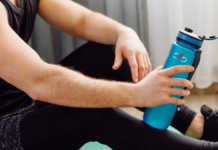Table of Contents
Exercise Daily – Staying physically active is especially important as we age, promoting healthy aging and an active lifestyle. According to the Centers for Disease Control and Prevention (CDC), adults 65 and older should aim for at least 150 minutes of moderate-intensity exercise per week or 75 minutes of vigorous-intensity exercise. Regular exercise has been shown to improve cardiovascular health, enhance muscle strength, and reduce the risk of falls among older adults.
To help maintain overall health and wellness, it’s essential to incorporate the best exercises for seniors into your fitness program. The American Council on Exercise (ACE) recommends combining strength and conditioning exercises and activities that improve balance and flexibility. Bodyweight exercises, such as squats and lunges, can help improve muscle strength, while seated or standing exercises with resistance bands can enhance flexibility.
Exercise Program for Seniors
To embark on a successful fitness journey, it’s essential to create an exercise plan tailored to the needs and abilities of older adults. Start by setting realistic fitness goals that align with your aspirations and physical condition. Whether improving strength, enhancing balance, or increasing flexibility, having clear goals will help you stay focused and motivated throughout your fitness journey.
Group exercise classes tailored for seniors can make staying active enjoyable and social. These classes often include a variety of exercises suitable for older adults, such as seated aerobics, yoga, and Tai Chi. Additionally, exercises focusing on improving balance, such as standing on one leg or heel-to-toe walking, can help reduce the risk of falls and maintain mobility.
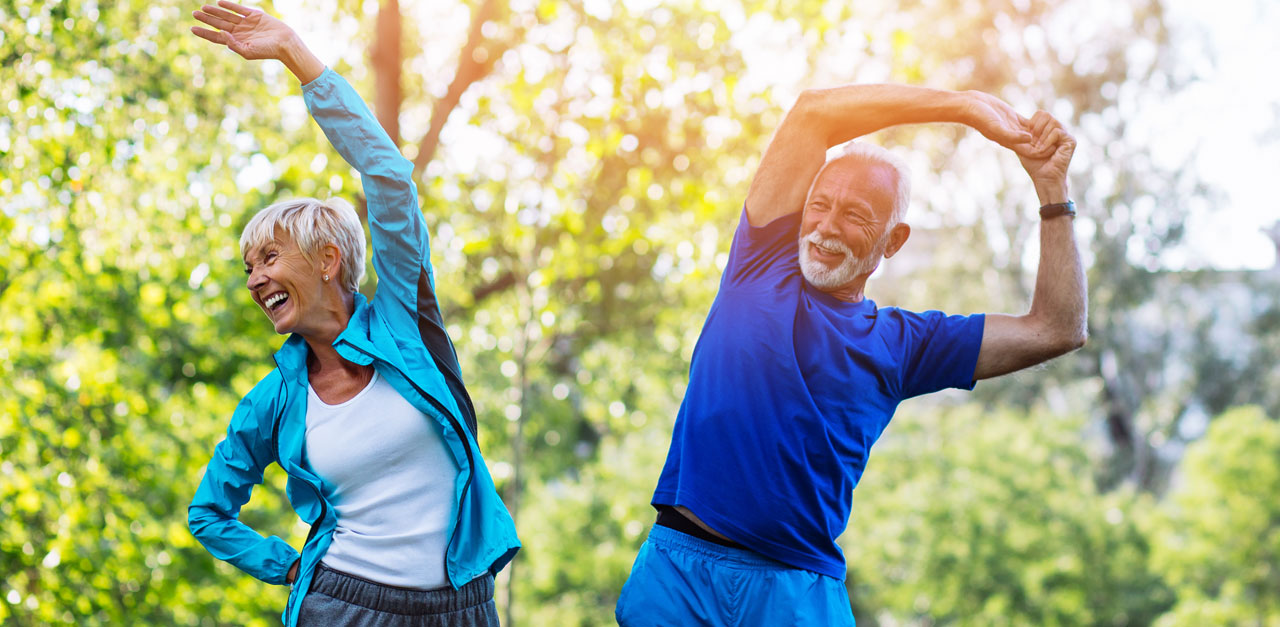
Types of Exercises for Older Adults
A well-rounded exercise program for seniors should include a combination of aerobic exercises, strength training exercises, and balance exercises. Each type of exercise serves a different purpose and contributes to overall fitness.
Aerobic Exercises for Seniors
Aerobic exercises, also known as cardiovascular exercises, are essential for maintaining heart health, improving endurance, and managing weight. These exercises increase your heart rate and breathing, improving the efficiency of your cardiovascular system. For older adults, low-impact aerobic exercises are recommended to minimize stress on muscles and joints.
Aerobic Exercises for Seniors
Aerobic exercises offer a wide range of health benefits for older adults. They improve cardiovascular health, increase endurance, and help manage weight. Engaging in low-impact aerobic exercises is especially beneficial for seniors as they reduce the risk of joint pain and injury. Let’s explore some examples of low-impact aerobic exercises that seniors can incorporate into their exercise routine:
- Walking: Walking is a simple yet effective way to engage in aerobic exercise. It can be done outdoors or on a treadmill, allowing you to control the intensity and pace.
- Cycling: Cycling is a low-impact exercise that provides cardiovascular benefits while minimizing joint stress. Whether you prefer outdoor cycling or using a stationary bike, it’s a great way to get your heart rate up.
- Water Aerobics: Water aerobics is a popular exercise for seniors, as it provides resistance and supports the body, reducing the risk of injury. The buoyancy of water also helps relieve stress on the joints, making it an excellent choice for individuals with arthritis or joint pain.
- Tai Chi: Tai Chi is a gentle exercise that combines flowing movements and deep breathing. It improves balance and flexibility and reduces the risk of falls.
Incorporating these aerobic exercises into your routine can improve cardiovascular health, boost energy levels, and enhance overall well-being.
Strength Training Exercises for Older Adults
Strength training exercises are essential for maintaining muscle strength and preventing age-related muscle loss. Regular strength training allows older adults to improve their functional abilities, reduce the risk of falls, and enhance their overall body strength. It’s important to note that strength training exercises should be performed with proper form and technique to prevent injuries.
It’s essential to consult with your healthcare provider before starting any new fitness regimen, especially if you have any underlying health conditions. They can guide you in finding the best forms of exercise for your individual needs and help you create a safe and effective exercise regimen.
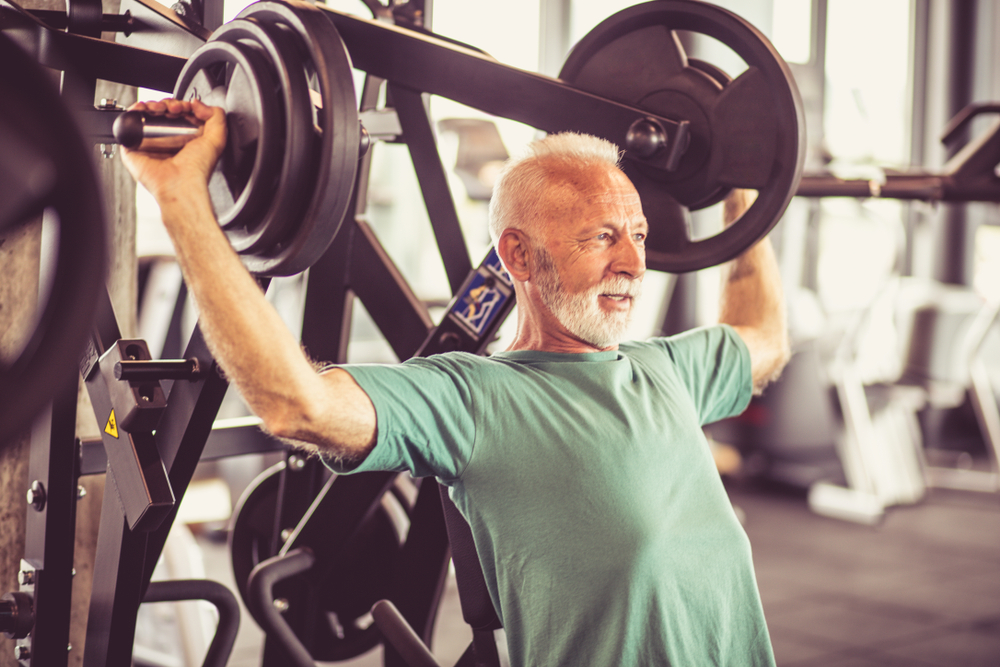
Strength Training Exercises for Older Adults
Strength training exercises are crucial in maintaining muscle strength and preventing age-related muscle loss. Incorporating these exercises into your routine can improve your functional abilities, reduce the risk of falls, and enhance your overall body strength. Here are some recommended strength training exercises for older adults:
- Bodyweight Squats: Squats are a compound exercise that targets multiple muscle groups, including the quadriceps, hamstrings, and glutes. They can be performed using your body weight as resistance, making them suitable for seniors.
- Resistance Band Workouts: Resistance bands are a versatile and convenient tool for strength training. They provide resistance throughout the movement, helping to build strength without putting excessive stress on the joints.
- Free Weights: Using dumbbells or barbells, you can perform exercises such as bicep curls, tricep extensions, and shoulder presses. Start with lighter weights and gradually increase the resistance as you build strength.
- Chair Exercises: Chair exercises are ideal for seniors with limited mobility or balance issues. They can be performed while sitting in a chair or using it for support during standing exercises.
Incorporating these strength training exercises into your routine two to three times a week can improve your muscle strength, enhance your functional abilities, and maintain your independence as you age.
Balance Exercises for Seniors
Balance exercises are essential for older adults as they help improve stability and reduce the risk of falls. Falls can have severe consequences for seniors, leading to injuries and a loss of confidence. By incorporating balance exercises into your routine, you can improve your balance and coordination, enhancing your overall mobility and quality of life.
Balance Exercises for Seniors
Balance exercises are essential for older adults as they help improve stability, reduce the risk of falls, and enhance overall mobility. These exercises focus on strengthening the muscles involved in maintaining balance and coordination. Here are some examples of balance exercises that seniors can incorporate into their exercise routine:
- One-Leg Stands: Stand near a sturdy object for support and lift one foot off the ground, balancing on the other leg. Hold this position for a few seconds, and then switch legs. As you progress, try to increase the duration of the balance hold.
- Heel-to-Toe Walk: In a well-lit area with plenty of space, walk in a straight line, placing the heel of one foot directly in front of the toes of the other foot. This exercise challenges your balance and coordination.
- Yoga or Pilates: Yoga and Pilates incorporate balance exercises into their routines, focusing on body awareness and core strength. These practices can improve balance and flexibility while promoting relaxation and stress reduction.
Incorporating these balance exercises into your routine can improve your stability, reduce the risk of falls, and enhance your overall mobility and confidence.
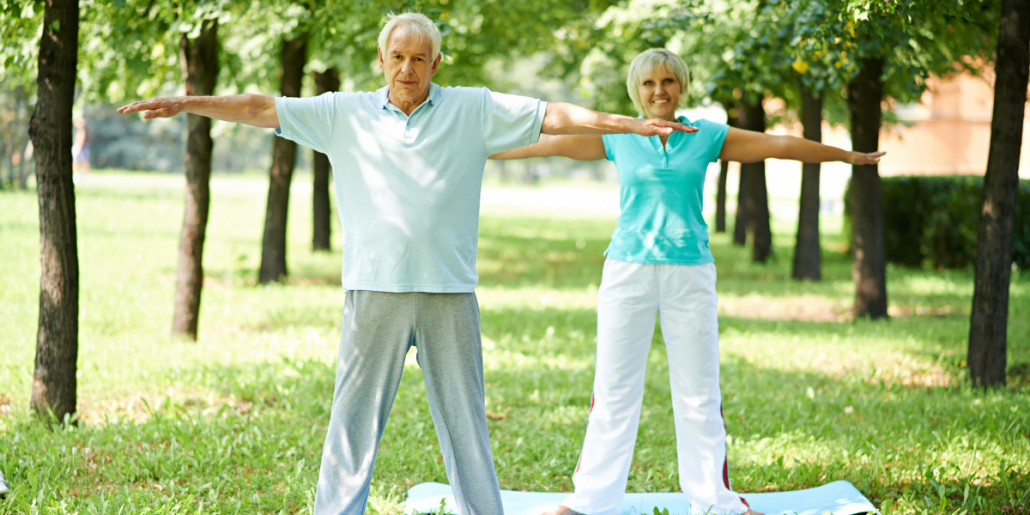
Incorporating Mobility Exercises
In addition to aerobic exercises, strength training, and balance exercises, incorporating mobility exercises into your routine is important for maintaining flexibility and range of motion. Mobility exercises help keep your joints mobile, reduce stiffness, and improve your ability to perform daily activities.
Other Forms of Exercise for Seniors
In addition to aerobic exercises, strength training, and balance exercises, other forms of exercise can benefit older adults. These exercises offer variety and cater to different fitness preferences and abilities.
Pilates Exercises
Pilates is a gentle form of exercise that focuses on core strength, flexibility, and body awareness. It incorporates controlled movements and breathing techniques to improve posture, balance, and overall body strength. Pilates exercises can be performed using a mat or specialized equipment such as a Pilates reformer.
Water Aerobics
Water aerobics is a low-impact form of exercise that takes place in a pool. It provides resistance for muscle strengthening while reducing stress on the joints. Water aerobics classes are often led by instructors and can be an enjoyable way to stay active and socialize with others.
Chair Exercises
Chair exercises are designed for individuals with limited mobility or balance issues. These exercises can be performed while sitting in a chair or using it for support during standing exercises. Chair exercises focus on improving strength, flexibility, and range of motion.
By incorporating these additional forms of exercise into your routine, you can add variety to your workouts and cater to your personal preferences and abilities.
Designing a Safe and Effective Workout Routine
When exercising as a senior, it’s essential to prioritize safety and ensure that your workout routine is effective. Here are some critical considerations for designing a safe and effective workout routine:
Warm-up and Cool-down Exercises
Start your exercise session with a warm-up consisting of gentle movements to increase blood flow and warm up the muscles. This can include marching in place, shoulder rolls, and gentle stretching. After your workout, cool down with light stretching exercises to promote flexibility and reduce muscle soreness.
Progression and Modification of Exercises
Gradually progress your workouts by increasing exercise intensity, duration, or resistance over time. This allows your body to adapt and improve without overexertion. Additionally, modify exercises as needed to accommodate any physical limitations or injuries you may have. For example, you can reduce the range of motion or use lighter weights.
Listening to Your Body
Pay attention to your body and listen to any signs of discomfort or pain. Feeling some muscle soreness after a workout is normal, but sharp or persistent pain may indicate an injury. If you experience pain or discomfort, modify or stop the exercise and consult a healthcare professional if necessary.
Exercise promotes healthy aging and improves the quality of life for older adults. By staying physically active and incorporating regular exercise into your routine, you can enjoy the numerous health benefits of staying active and maintaining independence in your activities of daily living.
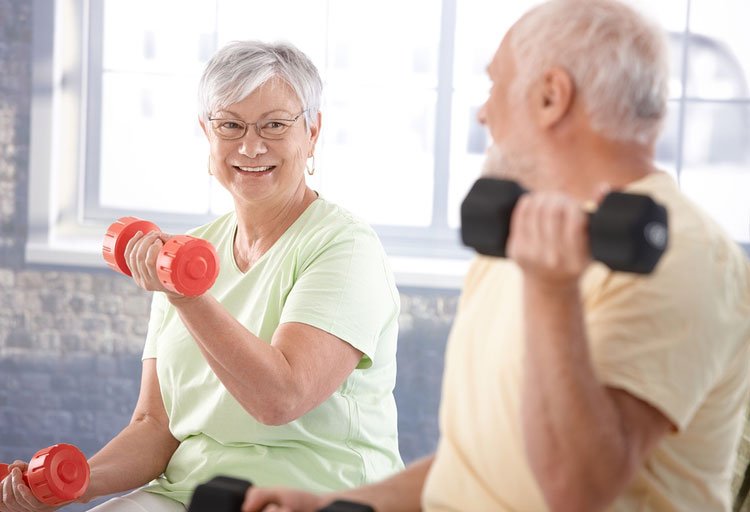
Staying Motivated and Overcoming Barriers
Staying motivated is key to maintaining a regular exercise routine. Here are some tips to help you stay motivated and overcome common barriers:
- Find an exercise buddy or join a group fitness class to make exercise more enjoyable and social.
- Set realistic goals and track your progress to stay motivated.
- Mix up your routine to prevent boredom and keep things interesting.
- Reward yourself for achieving milestones or sticking to your exercise routine.
- Stay positive and focus on the benefits of exercise for your health and well-being.
Common barriers to exercise for seniors include lack of time, physical limitations, and fear of injury. Overcome these barriers by finding creative ways to incorporate physical activity into your daily routine, seeking guidance from a fitness professional or healthcare provider, and starting slowly with exercises that suit your abilities.
The Role of Nutrition in Senior Fitness
Exercise alone is not enough to maintain optimal health and fitness. Proper nutrition is crucial in supporting your exercise routine and overall well-being. Seniors need to maintain a balanced diet that includes a variety of fruits, vegetables, whole grains, lean proteins, and healthy fats. Adequate hydration is essential, so drink plenty of water throughout the day.
Consultation with a Healthcare Provider
Before starting an exercise program, it’s always a good idea to consult your healthcare provider, especially if you have any pre-existing medical conditions or concerns. They can provide personalized recommendations, discuss any modifications needed for your exercise routine, and ensure that you’re engaging in safe and suitable activities for your health needs.
FAQs – Senior Fitness: Safe and Effective Exercises for Older Adults
Q: Can seniors engage in high-intensity exercises?
A: While high-intensity exercises may not suit all seniors, many older adults can safely engage in moderate-intensity exercises. It’s important to start comfortably and gradually increase the intensity as your fitness improves. Be sure to listen to your body and consult a healthcare provider with any concerns.
Q: How often should older adults exercise?
A: The American Heart Association recommends that older adults aim for at least 150 minutes of moderate-intensity aerobic activity or 75 minutes of vigorous-intensity aerobic activity per week. Additionally, two or more days a week should be dedicated to strength training exercises that target all major muscle groups.
Q: Can seniors with joint pain still exercise?
A: Yes, seniors with joint pain can still engage in exercise. Low-impact exercises, such as swimming, cycling, or using an elliptical machine, can be beneficial as they minimize joint stress. Choosing comfortable exercises and modifying them as needed is important to avoid exacerbating joint pain.
Q: Should seniors consult a doctor before starting an exercise program?
A: Yes, it’s generally recommended that seniors consult with their healthcare provider before starting a new exercise program. They can assess your health condition, provide tailored recommendations, and address any specific concerns or considerations you may have.
Q: Are group fitness classes suitable for older adults?
A: Group fitness classes can be suitable for older adults, particularly those designed specifically for seniors or those with low-impact exercises. These classes offer a social and supportive environment, and instructors can provide modifications to accommodate different fitness levels and abilities.
Conclusion
Regular exercise is crucial for seniors to maintain their health, mobility, and overall well-being. By incorporating a well-rounded exercise program that includes aerobic exercises, strength training exercises, balance exercises, and mobility exercises, older adults can improve their cardiovascular fitness, strengthen their muscles, enhance their balance, and maintain their flexibility. It’s crucial to design a safe and effective workout routine, listen to your body, and consult a healthcare provider before starting any new exercise program, especially if you have pre-existing medical conditions.





